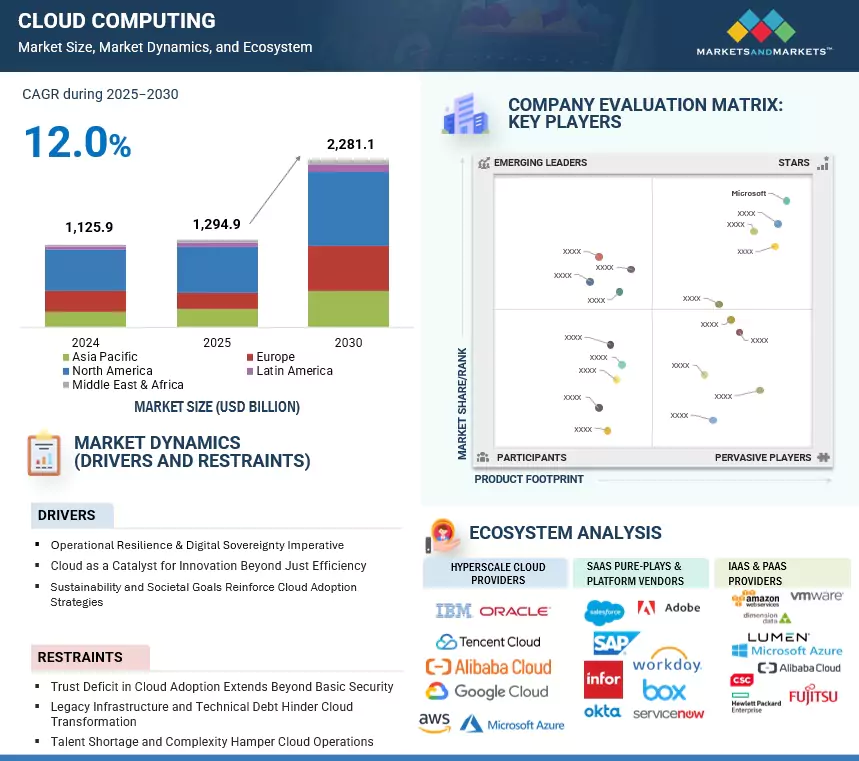
Have you ever felt your once-speedy laptop grinding to a halt, especially when you are compiling code or managing complex projects? It is a common frustration: software development can be resource-intensive, and inefficient build processes can make even a powerful machine feel sluggish. However, what if there were a simple yet incredibly powerful command-line tool that could fundamentally change how your system handles these tasks, breathing new life into your development workflow and, by extension, your entire machine?
Today, we are delving deep into GNU Make, a venerable utility that might just be the secret weapon you need. While it may seem like an arcane tool for seasoned developers, understanding the principles of Make offers a direct path to optimizing how software is built and maintained on your system. This is not just about faster compilation; it is about smarter resource utilization, reduced wait times, and a more responsive computer overall.
By mastering GNU Make, you are not merely learning a tool; you are gaining control over the very foundation of your software ecosystem. We will explore its core capabilities, unravel the mysteries of makefiles, and demonstrate how this dependency-driven automation can significantly ease your development life and make your “old” laptop feel surprisingly “new”. Prepare to unlock a level of efficiency you might not have thought possible.

1. **The Core Power of GNU Make: Building Software Smarter** At its core, GNU Make is a remarkably simple yet profoundly powerful command-line tool. Its primary mission is to orchestrate the creation of executables and other non-source files from a program’s source files. It serves as the ultimate project manager for your code, ensuring that every piece is built, updated, and linked efficiently in accordance with a meticulously configured makefile. This automation is of crucial importance in transforming complex build procedures into a single, straightforward command.
The ingenuity of Make did not originate from abstract theory, but from real-world frustration. Stuart Feldman, its creator, recounts that the inspiration came from a colleague’s exasperation after having wasted a morning debugging a “correct” program—the file simply had not been recompiled. This common pitfall, in which developers lose valuable time due to overlooked compilation steps, is precisely what Make was designed to address, eliminating human error by automating the process.
Before Make, building software on Unix often entailed custom shell scripts, an approach that was cumbersome and prone to errors. Make introduced a standardized, robust, and efficient method for managing builds through its dependency ordering and out-of-date checking. This streamlined the process, providing structured build logic and reducing the number of disparate build files that developers had to maintain.
Ultimately, Make enables end-users to build and install software without the need to delve into the intricacies of compilation. These complexities are neatly encapsulated within the developer’s makefile. This separation makes software easier to distribute, install, and maintain, benefiting everyone and allowing your system to run more smoothly by ensuring that its software is always built correctly and efficiently.

2. **Unlocking Efficiency: How Make Automatically Manages Dependencies** One of Make’s most impressive and productivity-enhancing features is its capacity to automatically manage dependencies. In a large-scale project, recompiling everything after a minor change represents a colossal waste of time. Make adeptly circumvents this issue by intelligently determining precisely which files require updating. It solely recompiles or regenerates non-source files that are directly or indirectly impacted by your source code modifications, substantially reducing build times and rendering your development experience more seamless.
This intelligent decision-making process is predicated on timestamps. A makefile rule designates a target file and its dependencies. Make then proceeds to compare the target’s timestamp with those of its dependencies. If the target file is newer than all its dependencies, it is deemed up-to-date and is not regenerated. This straightforward yet potent logic precludes unnecessary work, thereby accelerating your build cycles significantly.
Beyond individual checks, Make automatically ascertains the correct sequence for updates. In complex projects, where one generated file may serve as an input for another, establishing the appropriate order is of paramount importance. Make manages this intricate ordering, ensuring that all prerequisites are constructed prior to their dependent targets. This eliminates the cumbersome task of manually managing build sequences, which can rapidly become unmanageable in larger codebases.
The practical impact is substantial. Modify a few source files and execute Make, and you will observe that it focuses exclusively on components that genuinely necessitate attention. This selective updating minimizes CPU cycles, curtails energy consumption, and liberates your machine for other tasks. For anyone seeking to extract more performance from their development environment, comprehending Make’s dependency management is a transformative factor.

3. **Crafting the Blueprint: Understanding the Makefile** At the very core of Make’s functionality resides the “makefile”—a simple text file that functions as the comprehensive blueprint for your project’s build process. This instructional manual imparts to Make all the knowledge it requires regarding the generation of executables and other non-source files from their source materials. It is the place where you enumerate each output file and precisely define how it should be computed from its various inputs, serving as the intellectual center behind the entire operation.
When initiating a new programming project, incorporating a well – structured makefile is of paramount importance. This immediately empowers Make to build and install your program, streamlining a process that might otherwise devolve into a manual and error – prone endeavor. This practice conforms to GNU community conventions, ensuring that your package builds in a manner similar to many standard ones, without necessitating special procedures for users. It creates a predictable and user – friendly experience for anyone engaging with your code.
The makefile language embodies partial declarative programming, which means you describe the desired end conditions rather than prescribing step – by – step actions. You specify what needs building and what it depends on, and Make intelligently determines the how and when. This paradigm, although distinct from imperative styles, is extremely powerful for managing complex, interdependent tasks without becoming mired in sequential logic.
Makefiles are plain text files, a deliberate choice rooted in the original Unix ethos for “printable, debuggable, understandable stuff.” This transparency makes them easy to inspect, modify, and troubleshoot. When Make starts, it looks for these critical instruction files, typically `GNUmakefile`, `makefile`, or `Makefile` in your working directory, ready to bring your software to life.

4. **The Building Blocks: Demystifying Make Rules, Targets, and Commands** To effectively harness Make, you need to grasp its fundamental building block: the “rule.” A rule in a makefile tells Make precisely how to generate a “target” file from its “source files.” It’s a two-part instruction: first, a list of dependencies (all required input files), and second, a series of shell commands, or a “recipe,” to construct the target. This structure forms the backbone of all automated builds, providing clarity and control.
The basic anatomy is straightforward: `target: dependencies … commands …`. When executing Make, you can name specific targets to update, or it defaults to the first target listed, often a “phony” target for a common action. Crucially, Make ensures any input targets are brought up to date *first*, maintaining build integrity.
Make’s efficiency shines when evaluating rules. It meticulously checks if a target needs regeneration by comparing its timestamp with its prerequisites. If any prerequisite is newer than the target, or if the target doesn’t exist, Make executes the recipe. This ensures only outdated components are rebuilt, saving invaluable time. For example, compiling `hello.o` from `hello.c` only happens when `hello.c` is newer.
A critical detail: *each command line within a rule’s recipe must begin with a tab character*. Not spaces. This unique syntax has been a source of criticism, with Eric S. Raymond calling it “one of the worst design botches in the history of Unix.” Stuart Feldman, Make’s author, explained it as an early implementation workaround that stuck due to backward compatibility. While modern GNU Make offers the `.RECIPEPREFIX` variable to change this, the tab remains a hallmark, underscoring makefile formatting precision.

5. **Beyond Compilation: Make’s Versatile Toolkit for Any Task** While Make is widely recognized for its association with code compilation, its utility extends well beyond this fundamental task. It is a truly language – agnostic tool, not bound to C, Python, or any specific language. Makefile recipes simply outline shell commands, which can encompass anything that the shell of your operating system is capable of executing. This remarkable flexibility enables Make to adapt to a wide range of project requirements, rendering it an indispensable asset for various development workflows.
Consider the extensive scope of operations that you can automate. Make can effortlessly run a compiler, invoke a linker, or employ ar to update library archives. However, its capabilities do not end there. You can configure it to format documentation using tools such as TeX or Makeinfo, ensuring that the guides for your project are always up – to – date. This positions Make as a central hub for managing all facets of a software project, sparing you the trouble of remembering and executing multiple discrete commands.
Indeed, Make’s capabilities are not restricted to “building” a package. Its strength lies in automating any operation that is performed frequently enough to justify a structured approach. This includes installing or uninstalling packages, generating tags tables for code navigation, or even more innovative automation. The principle is straightforward: if you repeatedly execute a command sequence, Make can standardize and automate it, thereby enhancing productivity and minimizing errors.
Real – world applications are astonishingly extensive. Beyond code, Make can convert image formats, automatically copy files to a content management system, or send email build notifications. This renders Make invaluable for system administrators, content creators, or anyone managing repeatable file and command processes. By thinking creatively, you can transform numerous manual tasks into efficient, one – command operations, enabling your “old” machine to handle more.

6. **Why GNU Make Stands Out: Key Advantages for Modern Development** While the concept of Make has inspired many variants, GNU Make (or `gmake`) is the undisputed standard, especially on Linux and macOS. This isn’t accidental; GNU Make boasts powerful features enhancing its utility beyond other Make versions. These extensions are precisely why it’s the go-to tool for modern development, optimizing workflows and your system’s performance.
One powerful advantage is GNU Make’s efficient handling of intermediate files. It can intelligently regenerate, utilize, and then delete temporary files not needed for the final output. This clever management prevents project clutter and keeps your build process lean. By minimizing the build footprint, GNU Make helps keep storage clean and your system agile, contributing to that “brand new” feeling.
Another incredibly convenient feature is the `-o file` option. This allows you to tell Make to “pretend that source file `file` has not changed.” This is a lifesaver in specific scenarios. For instance, if you add a new macro to a header file without altering compiled code, most other Makes recompile all dependent files. GNU Make lets you bypass this unnecessary recompilation, giving fine-grained control and saving significant time on large projects.
Perhaps the most foundational difference, driving its widespread adoption, is that GNU Make is free software. This means it’s openly developed, maintained, and continually improved by a global community. This access to source code, coupled with its robust features (including conditionals and built-in functions), makes GNU Make exceptionally flexible and reliable. Its requirement for building critical software like the Linux kernel, GCC, LibreOffice, and Mozilla Firefox further solidifies its status as an indispensable component, providing a stable, efficient foundation for your system.
Read more about: 14 Family-Friendly Vehicles That Actually Fit Three Car Seats Across: Your Ultimate Guide

7. **The Nuances of Makefile Syntax: Directives and Comments** Makefiles, while appearing simple, hold powerful constructs that go beyond just rules and targets. Among these are directives, which are special instructions for Make itself, allowing for more dynamic and modular build processes. One common directive is `include`, enabling the incorporation of other makefiles into the current one, crucial for organizing large projects or sharing common build logic across different components.
This `include` directive means you don’t have to cram every single build instruction into one monolithic file. Instead, you can modularize your makefile, keeping related configurations together and improving readability. For instance, if you have common compiler flags or library paths used across several sub-projects, you can define them once in a separate makefile and simply `include` it wherever needed. This approach simplifies maintenance and reduces the potential for inconsistencies.
Beyond directives, comments are fundamental for readability and collaboration. In a makefile, any line starting with a hash symbol (`#`) is treated as a comment, completely ignored by Make during execution. While seemingly basic, well-placed comments clarify complex rules, explain design choices, or provide context for less obvious commands. They transform a cryptic script into an understandable guide, especially vital when revisiting a project after some time or when collaborating with others.
Understanding how to effectively use comments and directives like `include` is key to crafting maintainable and scalable makefiles. These features move beyond simply automating commands; they empower you to design a robust and clear build system. They are small but mighty details that contribute significantly to the overall “health” and long-term usability of your development environment.

8. **Mastering Macros: Variables, Predefined, and Advanced Usage** Macros, often referred to as variables in makefiles, are text values associated with a name, and they are incredibly powerful for making your makefiles flexible and easy to adapt. Instead of hardcoding paths or compiler names, you can define them as macros, like `CC=clang` or `CFLAGS=-Wall`. This means if you need to switch compilers or adjust optimization flags, you only change one line in your makefile, not every single rule that uses those values.
Makefiles also offer a suite of predefined internal macros, sometimes called automatic variables, that contextually provide information within rules. For example, `$@` refers to the target name being built, while `$<` points to the first prerequisite in the rule. `$?` expands to a space-delimited list of prerequisites that are newer than the target, making it perfect for conditional actions. Understanding these automatic variables streamlines your rule definitions and makes them more generic.
For more dynamic variable assignments, GNU Make provides advanced features. The `!=` operator allows you to assign the output of a shell command to a macro. Imagine `YYYYMMDD != date` – this captures the current date directly into a macro, useful for generating unique build identifiers or timestamping releases. This command substitution capability bridges the gap between static definitions and real-time system information, adding another layer of intelligence to your build processes.
Furthermore, macros can be composed of other macro values, and their expansion can be lazy, meaning they are only evaluated when actually used. This allows for complex, multi-level configurations. Operators like `+=` (append to macro), `?=` (assign if not already defined), and the standard `=` (simple assignment) offer precise control over how macro values are set and modified. Mastering these options transforms your makefiles from simple scripts into sophisticated configuration systems, adaptable to almost any build scenario.

9. **Beyond Basic Rules: Suffix and Pattern Rules for Efficiency** While explicit rules define how to build a specific target from specific sources, Make also offers more generalized ways to define build logic for entire *classes* of files: suffix rules and pattern rules. Suffix rules, though older and less flexible, were an early way to automate common transformations, like converting `.c` files to `.o` files. They operate based purely on file extensions, allowing Make to infer how to build a target with a given suffix from a source with another.
For example, a suffix rule `.c.o:` would tell Make how to compile *any* `.c` file into its corresponding `.o` object file without you needing to write a separate rule for each one. The internal macro `$<` would refer to the `.c` file, and `$@` to the `.o` file. This eliminates repetitive rule definitions, especially in projects with many source files that undergo similar processing steps. It’s a foundational concept for scaling your makefiles, even if newer methods have largely superseded it.
However, GNU Make strongly encourages the use of *pattern rules* over suffix rules for modern makefiles, as they offer significantly more power and flexibility. A pattern rule looks like a regular rule but includes exactly one `%` character in its target. This `%` acts as a wildcard, matching any substring of zero or more characters. The same `%` character in the prerequisites then defines how the source names relate to the target name.
This allows for much more sophisticated matching and transformation. For instance, a pattern rule like `%.txt: %.html` precisely defines how to convert *any* HTML file (`file.html`, `another.html`) into its text equivalent (`file.txt`, `another.txt`). This system, combined with automatic variables, provides a highly efficient and concise way to manage build processes for large, diverse sets of files. Pattern rules are the modern backbone for streamlining repetitive build tasks, making your makefile much more manageable.

10. **Command Control: Prefixes, Shells, and Error Handling** Executing commands within a makefile recipe requires a keen understanding of how Make interacts with your system’s shell. A critical detail, often a source of frustration for newcomers, is that each command line in a rule’s recipe *must* begin with a tab character, not spaces. This unique syntax, a historical artifact, remains a hallmark of makefile precision, though GNU Make now offers `.RECIPEPREFIX` to customize it for those who prefer an alternative.
Furthermore, each command within a recipe is typically executed in its own separate shell. This has important implications: environment variable changes or directory changes made by one command do not automatically persist to the next command in the same recipe, unless explicitly chained. For instance, a `cd` command on one line will only affect that single command, not subsequent ones. This modular execution model ensures command isolation but requires careful scripting if state needs to be maintained.
Make provides command prefixes to control execution behavior. A minus sign (`-`) before a command tells Make to ignore any errors returned by that command, allowing the build to continue even if a non-critical step fails. An “at” symbol (`@`) suppresses the echoing of the command itself before execution, keeping your output clean and focused on the results. Finally, a plus sign (`+`) forces the command to execute even if Make is invoked in “do not execute” mode (e.g., with `make -n`), useful for actions like cleaning up.
These prefixes, along with special targets like `.IGNORE` (to ignore all command errors) and `.SILENT` (to silence all command echoing), grant you granular control over the build’s verbosity and error resilience. Understanding these nuances allows you to craft robust recipes that handle unexpected situations gracefully and provide clear, concise feedback during the build process. It’s about taking command not just of *what* gets built, but *how* the building process communicates its progress and handles adversity.

11. **Robust Dependency Tracking: Preventing Subtle Bugs** One of the most insidious problems in software development is incorrect dependency tracking within a build system. A missing or extra dependency in a makefile can lead to subtle bugs: either a crucial file isn’t rebuilt when its source changes, leading to stale code, or too many files are rebuilt unnecessarily, wasting time and resources. Make’s strength lies in its ability to manage these dependencies, but manual maintenance of these lists can still be error-prone.
To combat this, modern development often leverages compilers to assist with dependency generation. For instance, the GNU Compiler Collection (GCC) can statically analyze source code and automatically output dependency rules in a makefile-friendly format using the `-MM` switch. This means your compiler, which inherently understands your code’s includes and dependencies, creates the precise list of prerequisites, rather than you having to manually maintain it.
This compiler-generated dependency information can then be included directly into your makefile, typically by writing it to a hidden file (e.g., `.depend`) and then using an `include` directive. This approach ensures that your dependency lists are always accurate and up-to-date, reflecting the true structure of your codebase. It’s a powerful strategy for eliminating the “forgotten dependency” bug, which can be notoriously difficult to track down.
Beyond direct compiler integration, meta-build tools like CMake or Meson offer another layer of dependency management. These tools generate makefiles (or other build system definitions) automatically from higher-level descriptions of your project. They abstract away much of the complexity, ensuring robust dependency tracking and build system portability across different environments. By embracing these advanced dependency tracking strategies, you can ensure your projects build correctly and efficiently every time, transforming your development experience.

12. **Joining the Make Community: Getting Involved and Extending Your Knowledge** Diving deep into GNU Make can seem like a solitary journey, but it’s far from it. GNU Make, as free software, is supported by a vibrant and active community that continuously develops and refines the tool. This means you’re not alone if you encounter a challenging makefile scenario or want to explore advanced techniques. Engaging with this community is a fantastic way to extend your knowledge and contribute back to a widely used and essential utility.
For general user help and discussion, the `help-make` mailing list is an excellent resource. If you’re encountering a bug, have enhancement requests, or want to discuss development aspects, `bug-make` is the place to go. These forums are frequented by experienced users and maintainers, offering invaluable insights and solutions. They’re a direct line to collective expertise, making troubleshooting and learning much more efficient than going it alone.
Beyond mailing lists, comprehensive documentation is readily available. You can access it online, or often directly from your terminal using `info make` or `man make`. These resources provide in-depth explanations of every feature, from basic rules to intricate functions and variables. Staying informed about the latest releases and test versions, often found on GNU’s “alpha” server, also keeps you at the forefront of Make’s evolving capabilities.
Contributing to GNU Make itself, or helping with translation efforts via the Translation Project page, is another rewarding way to get involved. By participating, you become part of the ongoing mission to make powerful tools accessible and robust. This collaborative spirit ensures GNU Make remains a cornerstone of software development, empowering users like you to master build automation and make your “old” laptop truly feel brand new, not just faster, but smarter and more efficient.
From its humble beginnings solving a developer’s frustration to its current status as a robust, flexible, and essential tool, GNU Make continues to empower developers to craft efficient and reliable build systems. By moving beyond the basics and delving into advanced features like sophisticated macros, versatile pattern rules, precise command control, and intelligent dependency tracking, you can unlock a level of productivity that truly transforms your workflow. This isn’t just about compiling code faster; it’s about gaining mastery over your development environment, making every project build seamlessly, and ensuring your system is always operating at its peak potential. Embrace the power of Make, and experience the remarkable difference it can make in your daily digital life.



